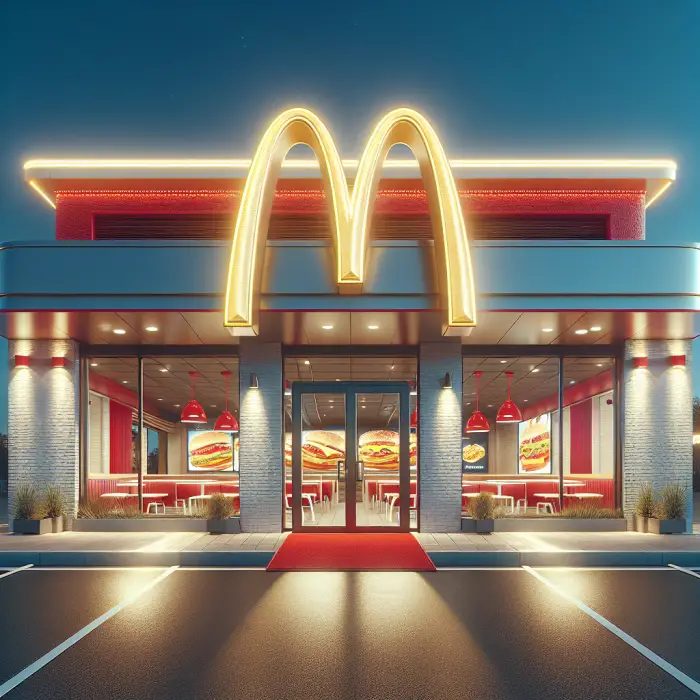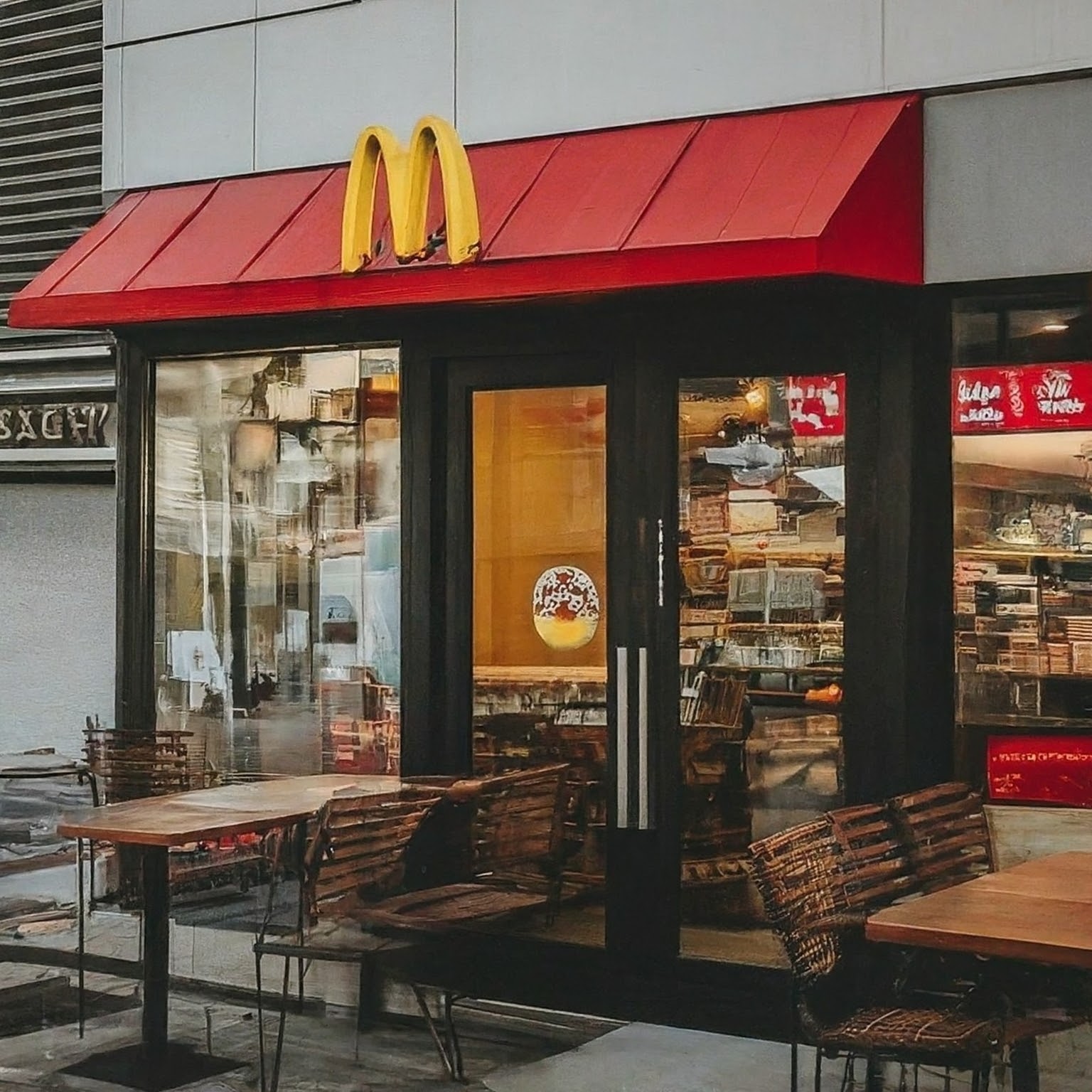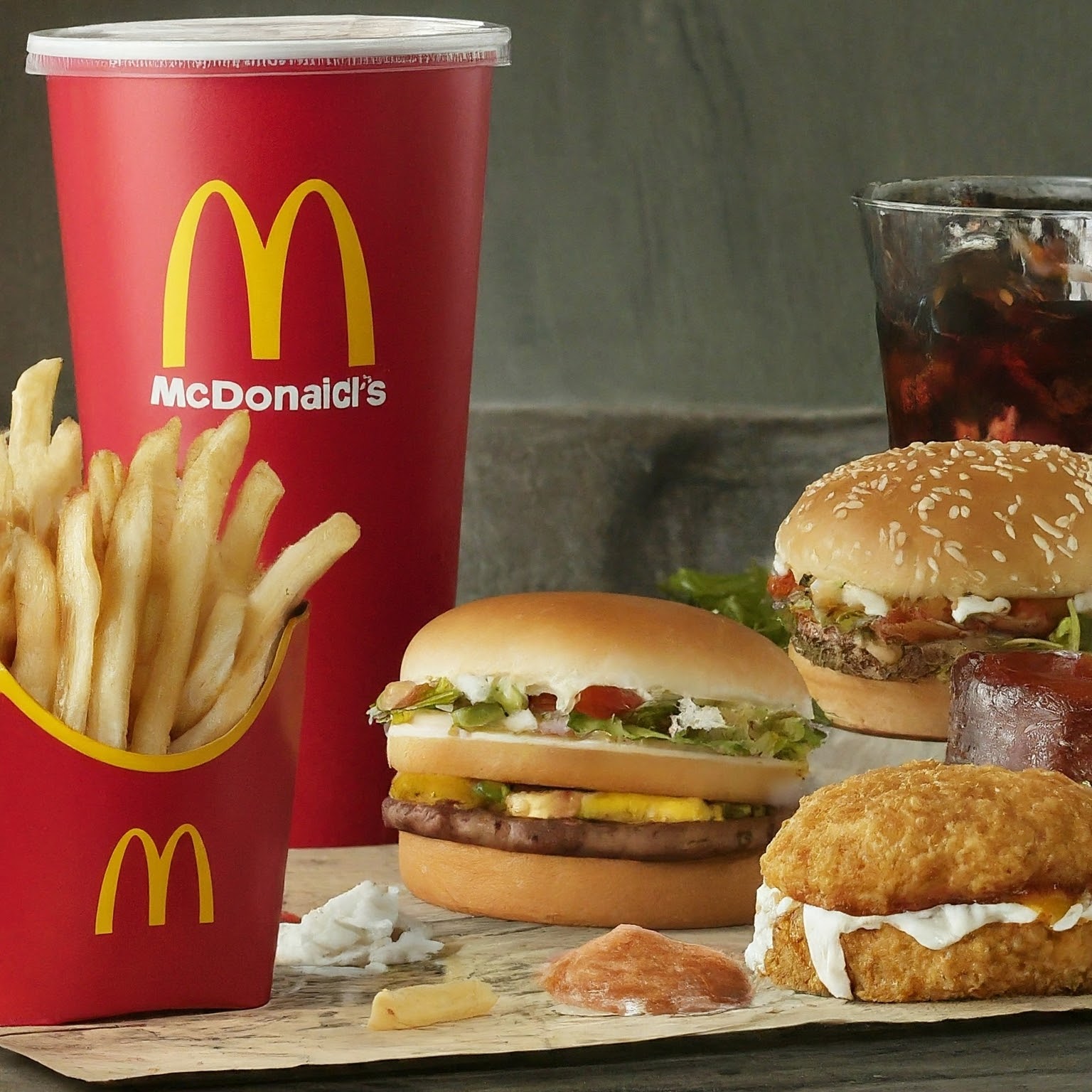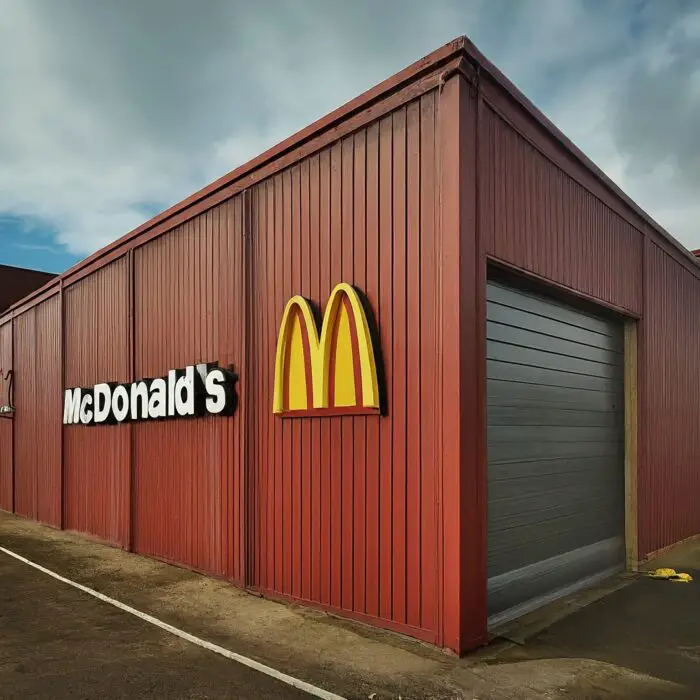
McDonald’s logistics warehouse.
Key Takeaways
- Improved Consistency: Centralized production ensures uniform quality across all McDonald’s locations.
- Enhanced Efficiency: Streamlined operations reduce production time and costs.
- Quality Control: Rigorous quality assurance measures ensure high standards.
- Innovation and Customization: Centralized facilities enable easier implementation of new recipes and regional specialties.
- Simplified Logistics: Consolidated production reduces supply chain complexity and costs.
- Sustainability: Centralized production allows for more effective implementation of environmentally friendly practices.
Introduction
In the fast-food industry, efficiency, and consistency are crucial for maintaining a competitive edge. McDonald’s, the global leader in this sector, has continually innovated to stay ahead.
One of the most significant advancements in their production strategy is the “burger factory” concept. This centralized production model has transformed McDonald’s operations, enhancing productivity, ensuring quality, and streamlining processes.
Let’s explore how the burger factory model has become a significant boost to McDonald’s production and overall success.
Understanding the Burger Factory Concept
Centralized Production
The burger factory model involves centralizing the production of essential components of McDonald’s menu items, such as burger patties, buns, and sauces.
These items are prepared and pre-assembled in large-scale, specialized facilities before being distributed to individual restaurants.
This approach contrasts with the traditional method where each restaurant prepares these components on-site.
Streamlined Operations
Centralized production facilities enable McDonald’s to streamline operations significantly. By focusing production in dedicated facilities, McDonald’s can achieve better control over quality, consistency, and efficiency.
This ensures that every McDonald’s burger, regardless of location, meets the same high standards that customers expect.
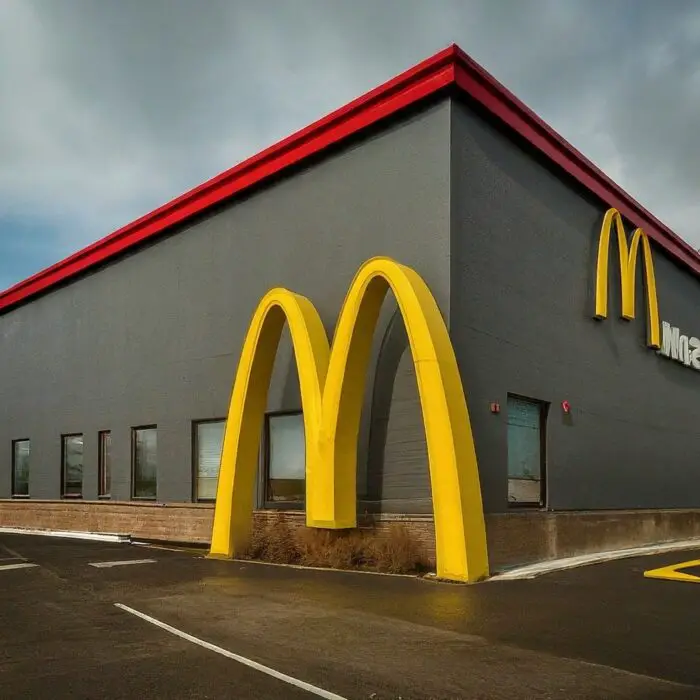
A logistics base.
Benefits of the Burger Factory Model
Improved Consistency
One of the primary advantages of the burger factory model is improved consistency. Centralized production ensures that all ingredients are prepared using standardized processes and equipment, reducing variability.
This results in a more uniform product across all McDonald’s locations worldwide.
Enhanced Efficiency
Efficiency is another significant benefit of the burger factory model. Large-scale production facilities can leverage economies of scale, reducing the cost per unit of production.
Additionally, by pre-assembling components, the time required for final assembly at individual restaurants is minimized, leading to faster service and increased customer satisfaction.
Quality Control
Quality control is more manageable in a centralized production setting. With dedicated facilities focused solely on production, McDonald’s can implement rigorous quality assurance measures.
This reduces the likelihood of errors and ensures that all products meet the company’s stringent standards.
Innovation and Customization
The burger factory model also allows for greater innovation and customization.
Centralized production facilities can more easily implement new recipes and techniques, ensuring that McDonald’s stays ahead of culinary trends. Additionally, customization options, such as limited-time offerings or regional specialties, can be efficiently produced and distributed.
Impact on McDonald’s Supply Chain
Simplified Logistics
The burger factory model simplifies McDonald’s supply chain. By consolidating production, the company can reduce the number of suppliers and streamline distribution. This not only lowers costs but also reduces the complexity of managing multiple supply chains.
Inventory Management
Centralized production facilitates better inventory management. With a clear understanding of production schedules and demand patterns, McDonald’s can optimize its inventory levels, reducing waste and ensuring that restaurants have the necessary components on hand.
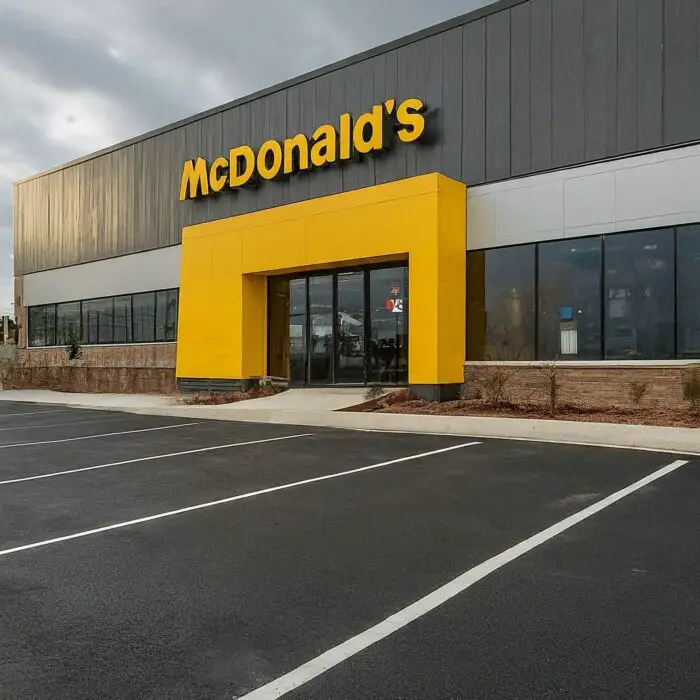
Another logistics base.
Sustainability
Centralized production can also contribute to McDonald’s sustainability goals. Large-scale facilities can implement environmentally friendly practices more effectively than individual restaurants.
For example, they can invest in energy-efficient equipment, waste reduction programs, and sustainable sourcing initiatives, thereby reducing the overall environmental footprint of the company’s operations.
Table: Comparison of Traditional vs. Burger Factory Production Models
| Aspect | Traditional Production | Burger Factory Model |
|---|---|---|
| Consistency | Variable across locations | Uniform quality |
| Efficiency | Depending on individual locations | Enhanced through economies of scale |
| Quality Control | Managed at each location | Centralized and rigorous |
| Innovation | Limited by individual capabilities | Easier implementation of new ideas |
| Logistics | Complex and varied | Simplified and streamlined |
| Inventory Management | Managed separately at each location | Optimized across the network |
| Sustainability | Dependent on individual practices | Centralized, large-scale efforts |
Conclusion
The burger factory model represents a significant advancement in McDonald’s production strategy. By centralizing production, the company can achieve improved consistency, enhanced efficiency, and better quality control.
Simplified logistics and better inventory management contribute to a more streamlined supply chain, while sustainability efforts are more effectively implemented on a large scale.
Despite the initial investment and logistical challenges, the long-term benefits of the burger factory model are clear.
McDonald’s can continue to innovate, customize its offerings, and maintain its reputation for delivering high-quality food to customers around the world.
As the fast-food industry evolves, the burger factory model positions McDonald’s to remain a leader in the market, providing a reliable and satisfying dining experience for millions of customers every day.
FAQ
What is the burger factory model?
The burger factory model involves centralized production of essential components of McDonald’s menu items, such as burger patties, buns, and sauces, in large-scale, specialized facilities before distributing them to individual restaurants.
How does the burger factory model improve consistency?
Centralized production ensures that all ingredients are prepared using standardized processes and equipment, reducing variability and resulting in a more uniform product across all McDonald’s locations worldwide.
What are the efficiency benefits of the burger factory model?
Large-scale production facilities can leverage economies of scale, reducing the cost per unit of production. Additionally, pre-assembling components minimize the time required for final assembly at individual restaurants, leading to faster service and increased customer satisfaction.
How does the burger factory model impact quality control?
With dedicated facilities focused solely on production, McDonald’s can implement rigorous quality assurance measures, reducing the likelihood of errors and ensuring that all products meet the company’s stringent standards.
What are the logistics advantages of the burger factory model?
By consolidating production, McDonald’s can reduce the number of suppliers and streamline distribution, lowering costs and reducing the complexity of managing multiple supply chains.
How does the burger factory model contribute to sustainability?
Large-scale facilities can implement environmentally friendly practices more effectively than individual restaurants, such as investing in energy-efficient equipment, waste reduction programs, and sustainable sourcing initiatives, reducing the overall environmental footprint of the company’s operations.

